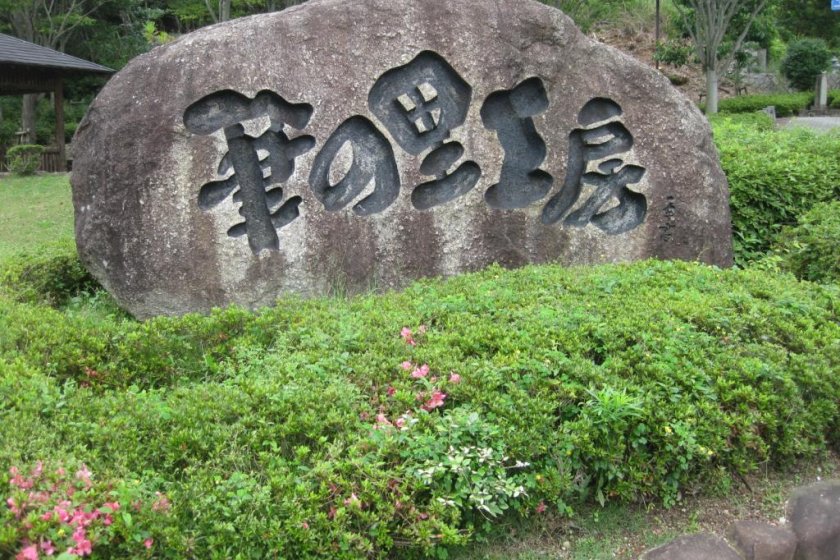The city of Kumano is the number one producer of fude (brushes) in Japan. Kumano produces high-quality brushes used not only in the traditional Japanese art of calligraphy, but also for cosmetic purposes like applying makeup. The town grew in fame recently when members of the Japan women’s soccer team (“Nadeshiko Japan”) received makeup brushes made in Kumano from Prime Minister Naoto Kan after winning the Women’s World Cup in 2011. There is also an annual Kumano brush festival held at the end of September.
Kumano is a very small town with not a great deal to offer in terms of sightseeing. But in celebration of its remarkable brush-making reputation, the town has created the Fude no sato kobo, or Brush Pen Studio. Fude no sato kobo was opened in 1994.
As I alluded to before, Kumano is a small town, and a bit out of the way. Thus, it seemed unlikely to me that many people would visit the town essentially just to see the Brush Pen Studio. That assumption proved to be a mistake. On the day I visited, the parking lot of the Fude no sato kobo was nearly full. And a survey of license plates quickly confirmed that many people had indeed come from all over Japan just to see these vaunted Kumano brushes.
As for the Fude no sato kobo itself, the building is impressive and modern-looking. The first floor is reserved for an information counter, a shop selling the brushes, and a small café. All of the displays are located on the basement level. Upon buying my ticket, I headed downstairs and was immediately struck by the enormous, nearly room-height fude brushes standing in the middle of the area. After taking a moment to process that sight, I took my time walking around and observing the many interesting and diverse displays the Fude no sato kobo had to offer. Unfortunately, all the exhibits are in Japanese with no English translations. So those interested parties who lack considerable Japanese skill should consider enlisting the help of a Japanese friend to accompany them for this one.
The detailed content of the displays were exhaustive. They explain the history of fude and calligraphy in Japan, dating back hundreds of years. There are numerous examples of fude and related tools used for both craft and makeup. There are examples of fude having been used to write, among other things, banners, books, manga, and the labels for alcohol and bottled water. There is a display celebrating some of the famous users of fude in Japan, both past and present, including Kusakabe Meikaku and Ishizaka Kouji. There are messages written with fude from various celebrities. There is a small movie theater showing on loop short clips which document the fude-making process. And, of course, there are many, many fude on display. The fude are from different eras and intended for different purposes. As such, it was interesting to note the very distinct size and design properties of each brush. The displays change periodically, and you can check the fude no sato kobo website to see a schedule.
Because this is not a museum, but a studio, you can observe a famous Kumano fude being made by hand right in front of you. You can also try your hand at making a brush yourself. I wasn’t able to do that on this day, but apparently it’s surprisingly easy to make one. You have to call ahead and make a reservation for those workshops, and the price is about 2000 yen. Also while at the Fude no sato kobo, I had the opportunity to observe a great number of people practicing calligraphy as well. There were both elderly people and children working diligently next to each other, and it was impressive to see that this traditional Japanese art is still alive and well in these modern times. The shop at the studio sells Kumano brushes of all kinds, which range in price from 300 yen to 20000 yen. You can also buy the brushes online. If you want a convenient place to have lunch, the café on the 1st floor offers pasta lunch sets for around 2000 yen. There is also a terrace which provides a good view of the beautiful lake which can be found behind the building.
If you have any interest in calligraphy, you owe it to yourself to visit Fude no sato kobo. There is a ton of interesting information to be found here, and a great chance to see a Kumano fude made from scratch by a master, as well as try your hand at making one yourself. Even those who aren’t interested in calligraphy or makeup may find it interesting to see the many surprising ways fude are used throughout Japan for different purposes every day. For that reason, Fude no sato kobo comes highly recommended.
































